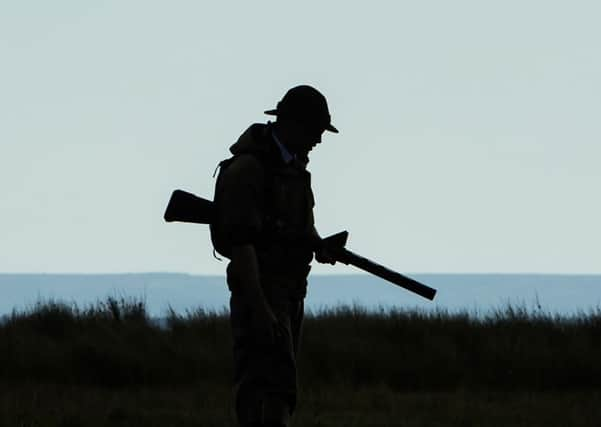Michael Badger: Protecting Yorkshire's moorlands for benefit of all


Firstly, man’s intervention in the present inter-glacial period with the repeated burning of grassland areas and, secondly, in the past 300 years, through the establishment of driven grouse shooting estates and hefted sheep farming operations in upland moorland locations. This is one of the true “moor losses” which will quickly occur if driven grouse shooting ceases.
Upland moorland is not a natural environment, unlike the rainforest, which can and does sustain itself. Both ling heather and bell heather require looking after and managing.
Advertisement
Hide AdAdvertisement
Hide AdIf not managed correctly, the heather, though a low-growing shrub, grows into a dense mass of long woody stems that, after time, supports very little wildlife.
It is not generally understood by the majority of the public that heather moorland is a fragile ecosystem and its bird and small mammal populations are easily reduced by too many predators. That includes foxes, stoats, weasels, crows that themselves raid birds’ nests for eggs – including hen harriers.
It is no coincidence that most of the actively managed heather moorlands in the British Isles are in private ownership, since this has provided the necessary continuity of management.
Modern-day heather moorland is a man-made construct that is now valued as a unique habitat that, left to nature, would disappear fairly quickly. It may not be a Victorian playground anymore, but without management the moors as they are enjoyed now would soon be no more.
Advertisement
Hide AdAdvertisement
Hide AdA succession of vegetation from heather – through bracken – birch woodland, scrub oak to mature forest would occur.
A recent example has arisen that illustrates the problems. Concern relating to the management of bird life on upland moorland reached new heights in the summer of 2014 with the issue of illegal killing of hen harriers, which are known to predate on red and black grouse.
All those involved have tried to reach a consensus to resolve the growing conflict between driven grouse moor custodians with commercial interests and bird conservation groups. Black and red grouse are unique among game birds in that they cannot be reared successfully in captivity as the adults require a sole diet of ling heather. To maintain or increase their population can only be undertaken by careful management on the fell.
Predation from hen harriers is exacerbated because these birds live in colonies and because one brood needs hundreds of meals. The proposed plan is to accept one breeding pair of hen harriers in an area of four square miles.
Advertisement
Hide AdAdvertisement
Hide AdIf numbers rose above this level, eggs would be removed and taken to an incubation centre. The reared chicks would be released into areas of Devon, Cornwall and Wales, away from the driven grouse moors, thereby re-establishing these species elsewhere.
This plan by the Department for Environment, Food and Rural Affairs (Defra) has not met with uniform approval from conservation groups. The Moorland Association represents the owners of most of the 149 driven grouse moors of England and Wales.
Its members are responsible for over 348,000 ha (860,000 acres) of moorland, preserving 1,500 jobs. Grouse shooting is worth £67.7m a year to England’s rural economy. Over the past 25 years, grouse moor owners have regenerated and recovered 217,000 acres of moorland, an area larger than Birmingham. They have blocked 1,250 miles of drainage ditches as an aid to locking up more carbon, creating thousands of small ponds and scrapes that will conserve water voles, insects and pearl mussels in watercourses and amphibians by trapping sediment and slowing down runoff. This will also reduce potential flood risks below the moor edge.
If cruelty is the issue, animal cruelty comes in many forms, and this narrative gives no space to debate a wider topic of such importance.
Advertisement
Hide AdAdvertisement
Hide AdBut if those amongst the public feel that the continued heritage of our beautiful upper moorlands is best taken out of the hands of the private landowner and entrusted to government or National Trust agencies, think again – it will not happen.
Michael Badger MBE from Leeds is a rural affairs commentator.